Keyword Golden Ratio is a powerful SEO technique that can help you rank faster on Google.
It involves finding underutilized long-tail keywords and using a formula to increase your chances of showing up on top of the search engine results pages.
Are you ready to dive in?
By following these KGR guidelines, your content can reach the first positions of Google!
Contents:
What is the Keyword Golden Ratio?
The Keyword Golden Ratio (KGR) is a data-driven technique that involves finding terms underutilized on the internet with relatively low competition and high relevance to your content.
The process is simple.
Start by discovering low-volume keywords with little competition (which has not been served much on the SERPs).
Then, build great content and optimize it around them.
It’s really that simple!
Thanks to this strategy, you will be able to climb the ranks faster and get organic traffic in a short time.
How to Calculate the Keyword Golden Ratio?
The Keyword Golden Ratio (KGR) is calculated with this formula:
dividing all the search results that contain a specific keyword in the title (using the allintitle operator) by the monthly search volume (the target search volume should be below 250).
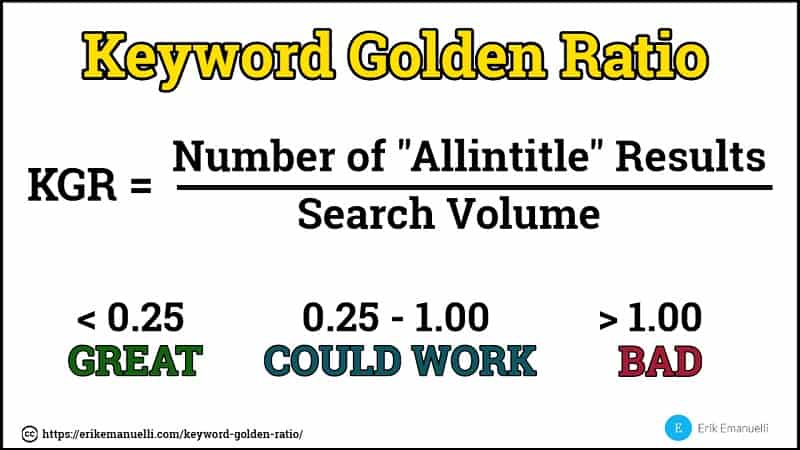
Now, you want to aim for a result of below 0.25 (the lowest, the better).
While between 0.25 and 1 could work, everything above 1 is bad (which means it will be hard to get your content ranked in the first 100 results of Google).
So, what is “Allintitle”?
Allintitle is a search operator that shows the number of results that include all the words of the query within the title tag on a page. This is a useful metric to help you measure the competition of keyword phrases.
To find the “allintitle” number you need, simply enter a command like this into the Google search box:
allintitle:keyword golden ratio
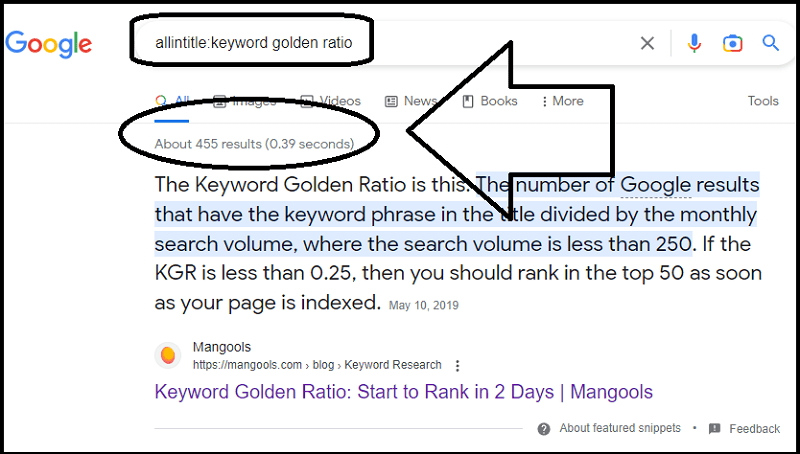
As you can see in this case, there are 455 results. It means, there are 455 websites with pages (likely articles) that have “Keyword Golden Ratio” in their titles.
Now, you just need to find the monthly search volume.
To do this, you can use your favorite SEO tool. For example Semrush, with the Keyword Overview feature.
Simply enter “Keyword Golden Ratio” and it will show you the monthly search volume (in this case, 140).
You want to take into consideration the local search volume, not the global volume.
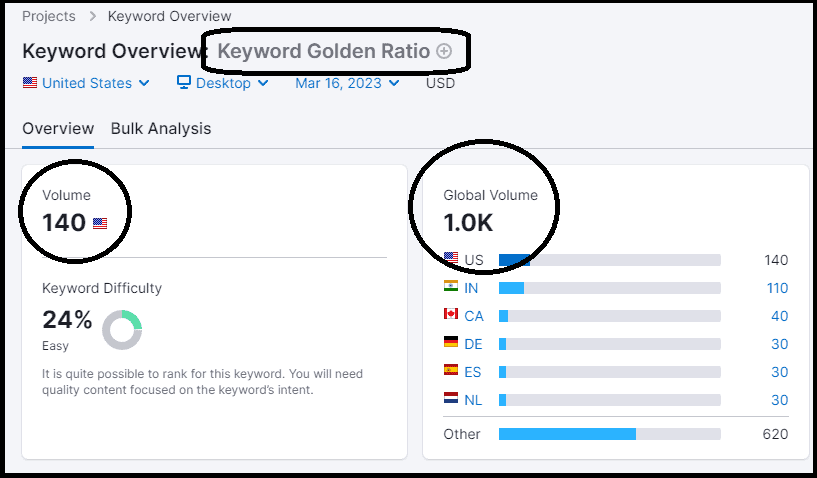
Finally, you can calculate the KGR by dividing 455 by 140 = 3.25.
Based on the formula shared before (see the visual explanation), a score of 3.25 is bad (which means, it will be hard to rank within the first 100 results).
Keyword Golden Ratio Examples
Let’s look at some examples to understand the Keyword Golden Ratio even better.
Suppose you are looking to rank for the long-tail keyword “robot.txt for WordPress“.
If you want to calculate the KGR for this keyword, you can follow these steps.
- Type in Google the search operator allintitle:robot.txt for WordPress to get the number of results (35)
- Find the monthly search volume with your favorite SEO tool (400)
- Use the formula to calculate the KGR —> 35/400 = 0,08
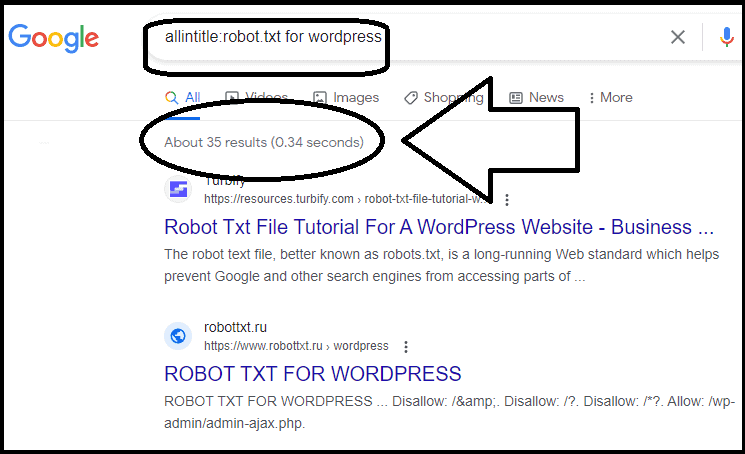
As you can see, the score for this keyword is 0.08, which means it has low competition and makes it ideal to use.
Let’s make another example.
This time, you want to analyze the term “what is a good bounce rate for a website“.
Follow these steps to discover the KGR for this phrase.
- Use the Google command allintitle:what is a good bounce rate for a website to find out the results (7)
- Discover the monthly search volume (in this case, 30)
- Calculate the KGR—> 7/30 = 0.23
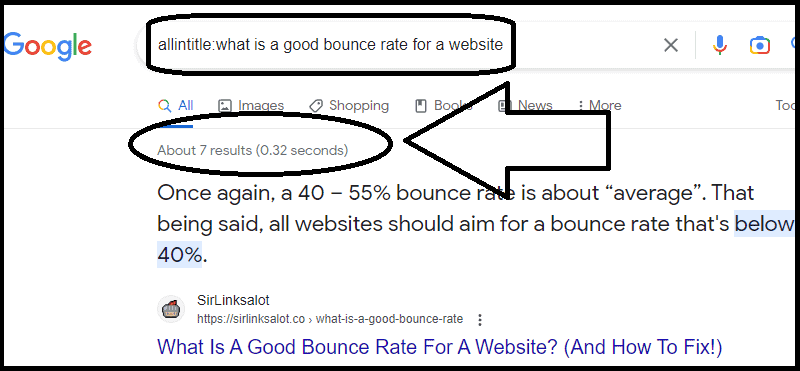
Again, this score is below 0.25 and makes it a good match to use for new content.
To complete the list of examples, let’s make another one.
How many results does the keyword “bucket brigade list” have?
The schema is the same, as in the previous cases:
- Search operator allintitle:bucket brigade list (59)
- Monthly search volume: 70
- KGR—> 59/70 = 0.8
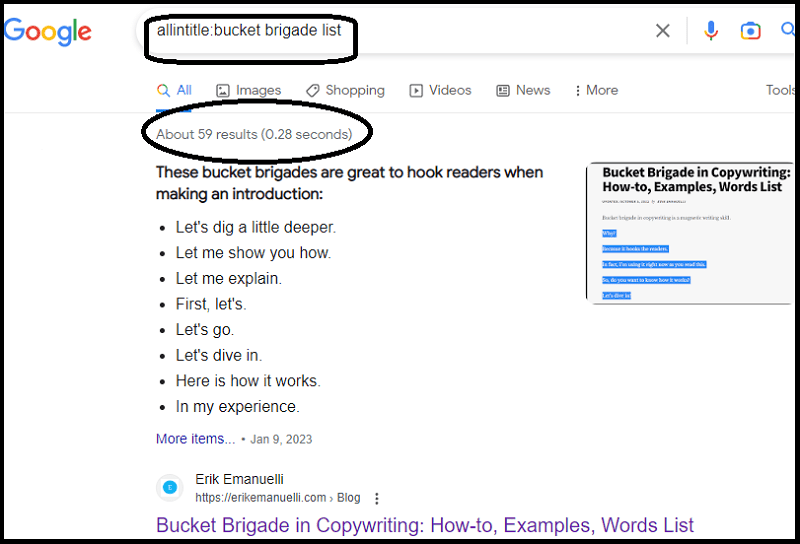
This long-tail keyword has a KGR of 0.8 which is above the recommended score but makes it a term that could work.
So, what is the bottom point?
Simply put, you should focus on terms that have lower KGR scores (below 0.25).
Pros and Cons of Keyword Golden Ratio Strategy
The Keyword Golden Ratio can be a great way to increase your visibility on search engines and get more organic traffic. However, there are some pitfalls.
Let’s see the pros and cons of this SEO method.
Pros:
- Easy to Implement Strategy
- Relatively Fast Results
- Great for New Sites
Easy to Implement Strategy
The KGR formula is quite easy to understand and use. All you need is to type in the search operator in Google and then divide the results by the estimated monthly search volume.
Once you have mastered keyword research (there are several ways to find profitable terms) and you have access to an SEO tool for traffic volume data (you can use the free version of tools), you can apply this strategy in no time.
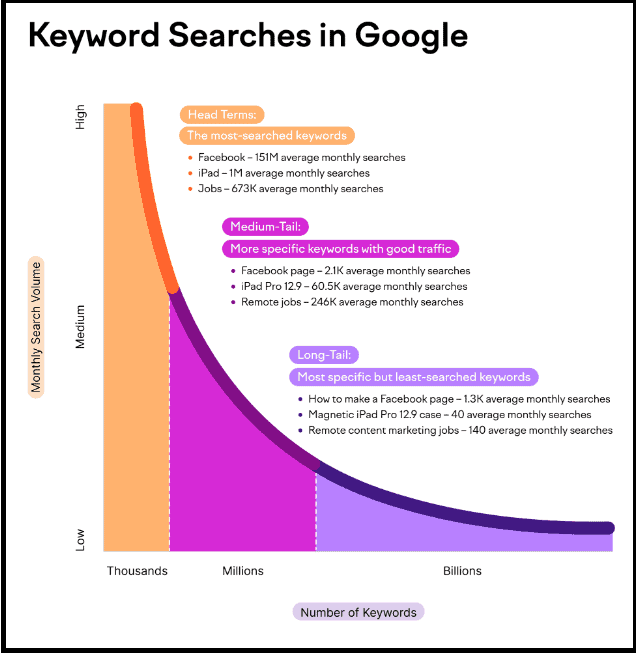
Relatively Fast Results
KGR enables site owners to succeed in getting relatively fast organic traffic. Focusing on low-competition keywords on Google allows you to target content that is not served in the SERPs, thus boosting your online presence.
As with any SEO method, the Keyword Golden Ratio won’t rank your website overnight. But if you apply the best practices and optimize your content properly, it can help you get to the first page of results faster than other strategies.
Great for New Sites
Creating a website that earns stable organic traffic requires serious effort. You must not only create premium content but also ensure all your on-page and off-page SEO elements are up to par, as well as technical SEO. This can be overwhelming for newbies.
When you use KGR, it allows you to prioritize your tasks by focusing on creating top-notch content first. After traffic (and revenue) start rolling in, then you can shift your attention to more competitive keywords or other web development components.
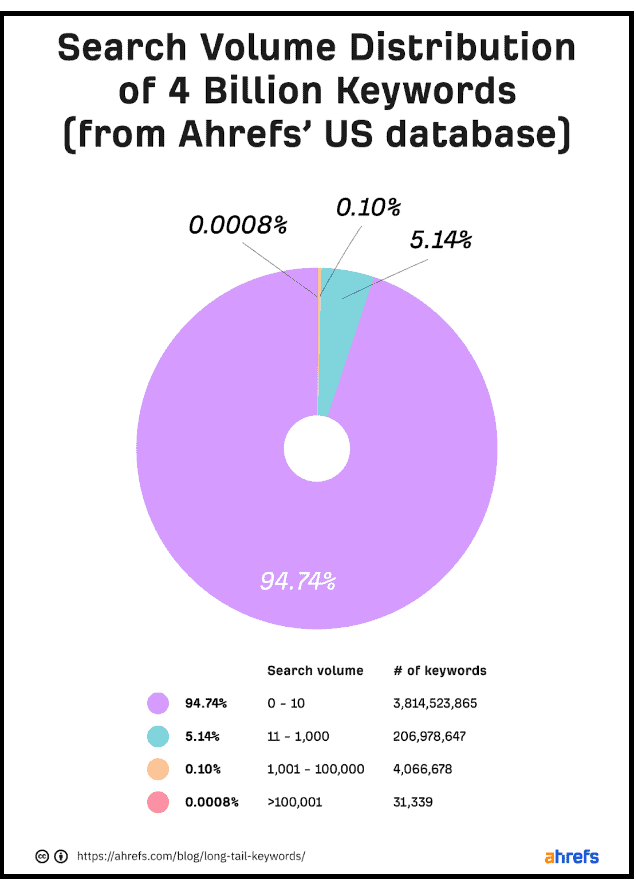
Cons:
- Allintitle Search Operator Is Not Precise Anymore
- Lots of Content Creation is Needed
- It Requires a Minimum Search Volume
Allintitle Search Operator Is Not Precise Anymore
Google has probably changed the way allintitle works in the last few years.
It’s now producing results that are not precise anymore, meaning that the KGR formula won’t be as accurate as it used to be.
You may want to use the Advanced Search of Google, instead:
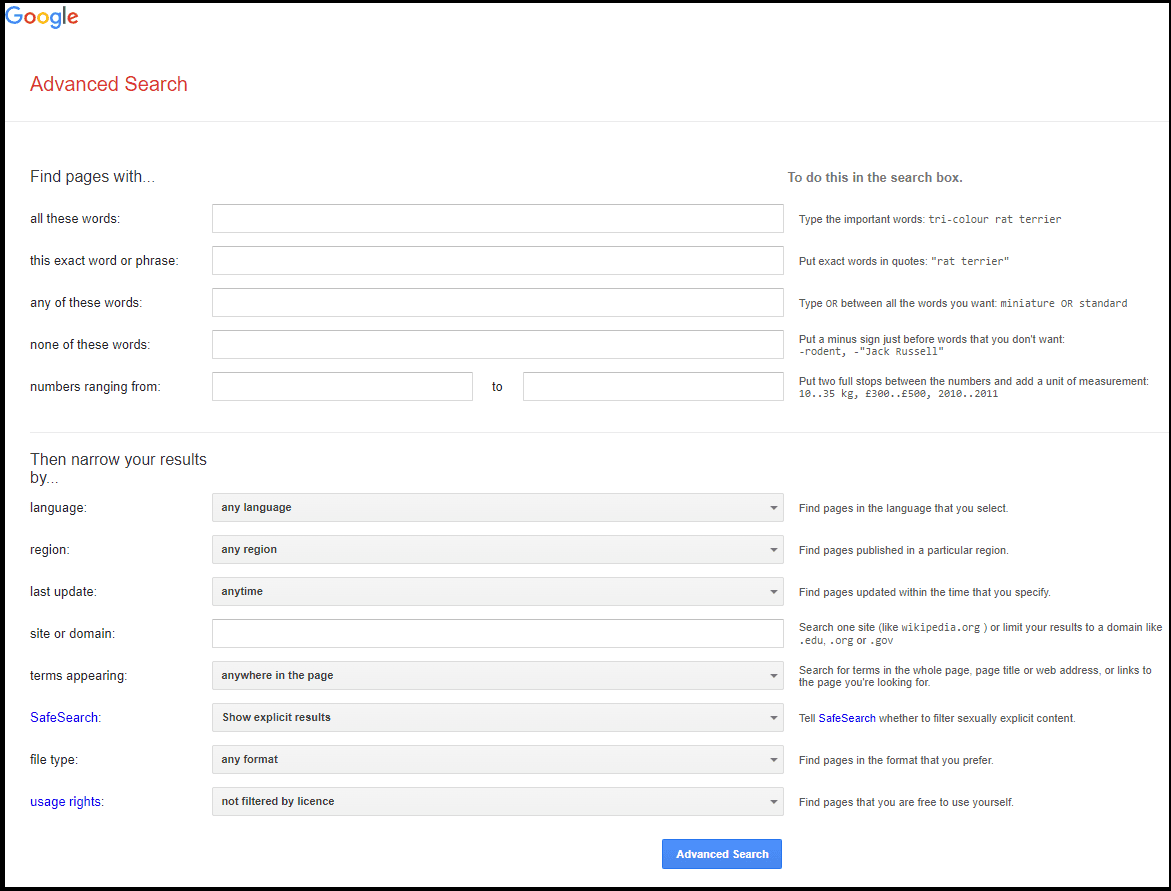
Lots of Content Creation is Needed
The Keyword Golden Ratio requires the website owner to create plenty of content. To get good results from KGR, you must create several pieces of content for each keyword you want to target (even if it’s a low-competition term).
And even if you can rank on top of Google for a specific long-tail keyword that has low competition, you should consider they all have relatively low search volume. This means the potential of organic traffic is limited.
It Requires a Minimum Search Volume
If the search volume is too low, it’s a sign that there isn’t enough interest in this keyword, and creating content using it won’t be worth your time.
To ensure an optimal return on investment, you should target moderately searched keywords with an average of 250 searches per month (or between 100 to 250) that are rarely written about or available on the internet.
Even low-hanging fruits (keywords that have low competition) with 100 monthly search volume are worthy of pursuing.
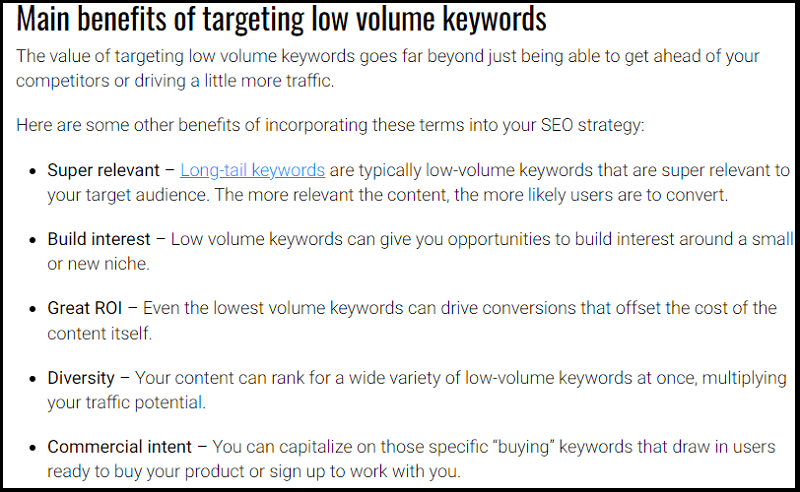
How to Find KGR Long-Tail Terms
The first step is to search for broad keywords or topic ideas.
Do you want to know how?
Try any of these methods:
Once you have a main keyword, it’s time to search for KGR long-tail keywords.
There are many ways to find hidden gems, but my favorite strategies are:
- Google Keyword Planner
- Semrush Keyword Magic Tool
- People Also Ask
- Google Search Console
- Google Related Searches
Important note: there are different ways to find the average search volume, but you can get it right away for free with the Keyword Surfer Chrome extension.
Google Keyword Planner
This tool is great for finding KGR long-tail keywords with minimum search volumes.
All you have to do is input your main keyword, and Google Keyword Planner will show you dozens of related terms that you can use:
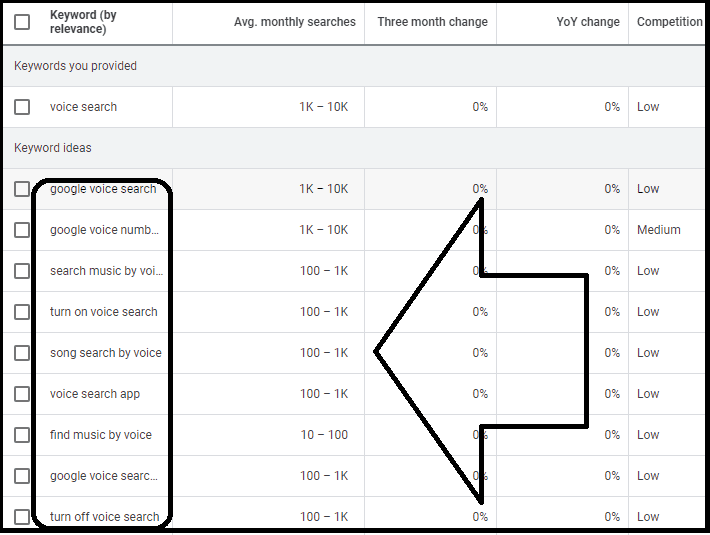
You want to filter for an average monthly search of under 1k.
Then, to find the exact search volume, you can follow this trick, without actually running an AdWords campaign.
Are you ready to dive in?
All you have to do is select a keyword under 1k and then click on “Add Keyword”:

The next step is to click on the “Forecast” tab (see the left-side menu):

And here, finally, you can see the exact search volume!

Semrush Keyword Magic Tool
Semrush is among the most popular SEO tools and it is a great way to find KGR-friendly long-tail terms.
All you have to do is visit the Keyword Magic Tool page and enter a broad keyword:

Semrush uses an AI-based algorithm to show related terms.
And it also allows you to filter out low search volume words:
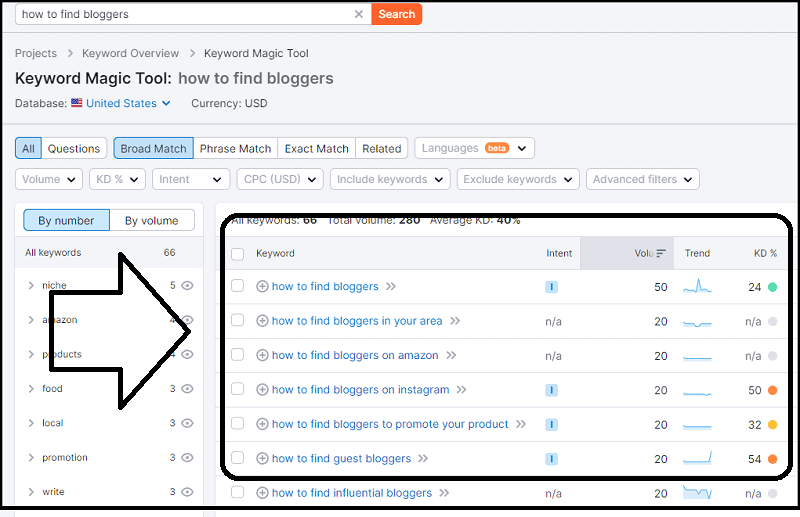
Once you have found a potential KGR keyword, just click on it (for example, how to find bloggers):
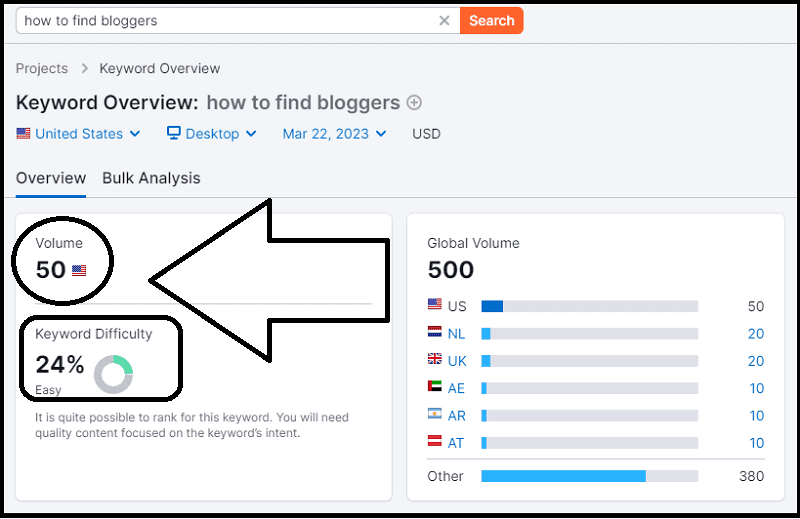
And here, as you can see, you can check the monthly search volume (as well as the keyword difficulty).
People Also Ask
People Also Ask is a Google feature that shows questions related to the query.
Just type a broad term to get related suggestions.
You can usually find this section in the upper part of the SERPs:
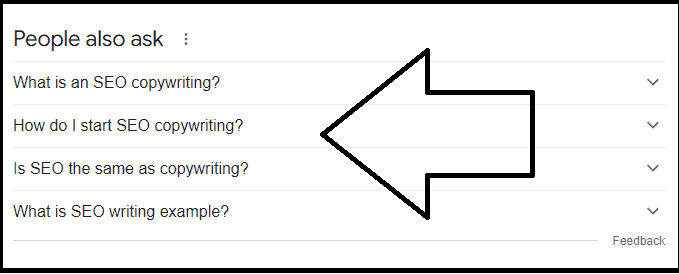
And when you click on a question, Google will show more relevant ones in the same box:
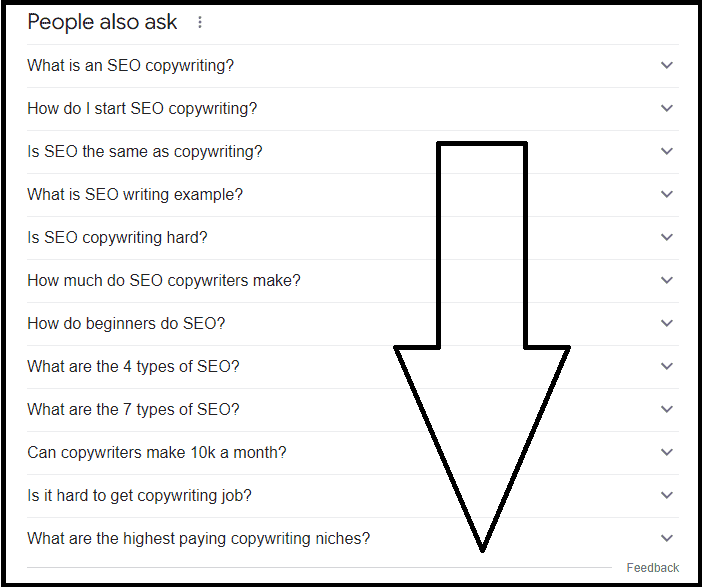
Now, you can go through each one to find KGR-friendly terms (checking the monthly search volume with an SEO tool or one of the strategies explained before).
Google Search Console
This is probably one of the best tools for finding long-tail keywords that are related to your content.
All you have to do is head over to your Google Search Console, and select “Search results” under the “Performance” tab:
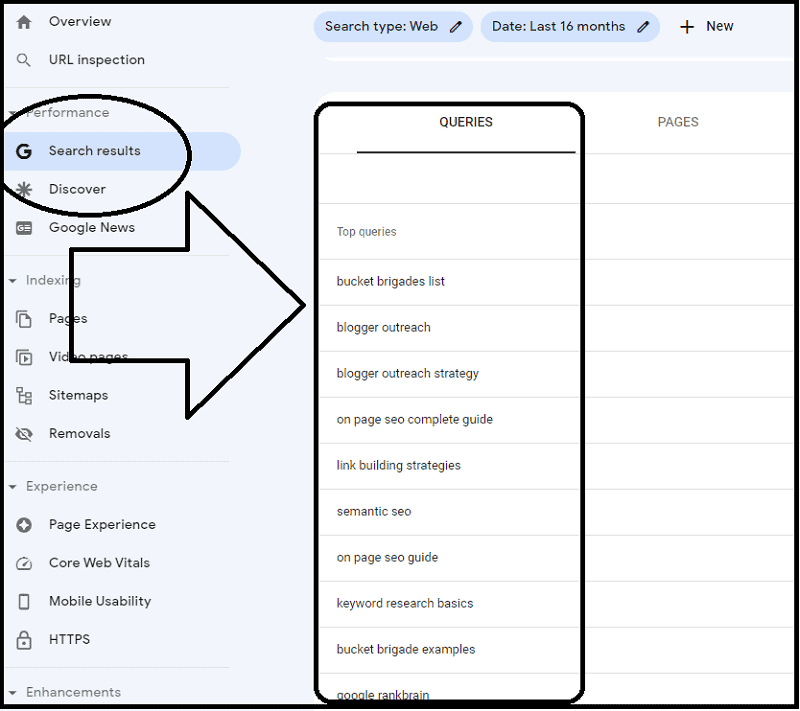
Here, you can see all the queries your website is already ranking for.
Then, you want to filter by the number of impressions, to check the lowest value first:
And find ideas for keyword golden ratio terms.
But wait!
Did you know that impressions are not exactly the search volume?
Read John Mueller‘s statement on Twitter:
https://twitter.com/JohnMu/status/1487502695434969094
So, even if you set the value to 28 days, you won’t get the monthly search volume of keywords.
But still, you can get an idea of the term whether it’s searched a lot.
Google Related Searches
It’s an often-overlooked feature of Google that you can use to find KGR long-tail terms.
When you type a query into the search bar, scroll down and take a look at the “Searches related” box for keyword ideas:

KGR Success Story
Now that you know how to search for KGR words, let’s take a look at a success story.
A few months ago, I was checking on Ahrefs the keywords my website was ranking for and found an interesting long-tail keyword.

It had a monthly volume of just 40 and a Difficulty score of just 8:
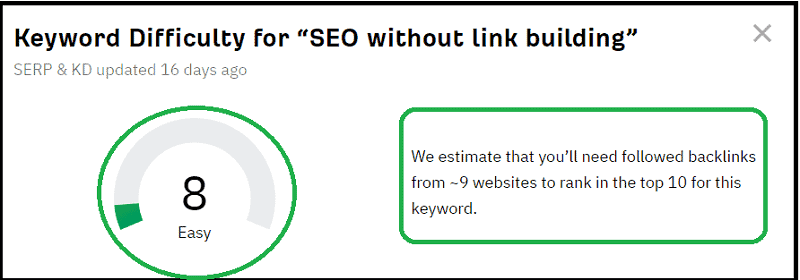
So, making the search in Google for the “Allintitle” operator, I found 12 results.
Applying the formula, the KGR was:
12/40 = 0.3
Based on this result, it might have worked to rank in the top positions for this keyword.
So, I created a quality article and optimized the content around the term.
And in just two weeks, I was already on the first page of Google.
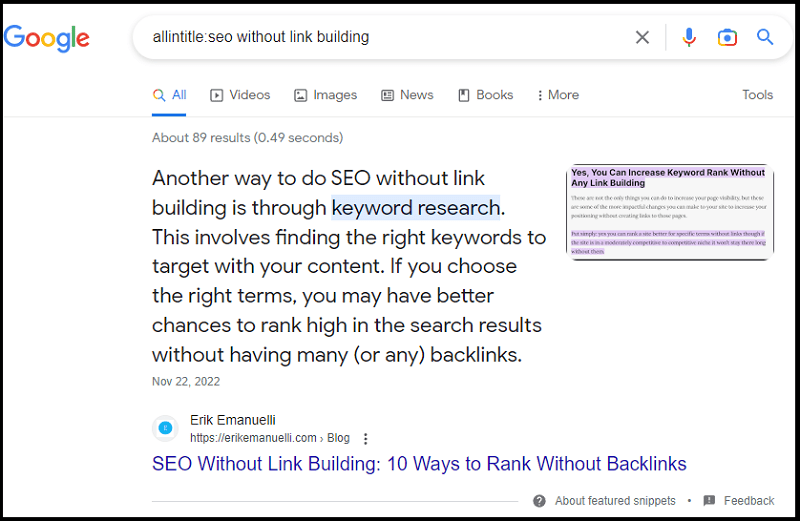
Not too bad, right?
So, what is the bottom line?
In short, KGR is a proven way to find great opportunities to rank on Google for specific long-tail keywords!
Keyword Golden Ratio FAQs
Q: Who invented the Keyword Golden Ratio strategy?
A: The Keyword Golden Ratio method was invented by Doug Cunnington of Niche Site Project in 2017 and has rapidly become a popular SEO strategy.
Q: How do I find out how many searches a keyword gets?
A: You can use a keyword research tool like Keyword Magic Tool or Google Keyword Planner to determine the monthly search volume of a particular keyword. You can also use Google Search Console to find out which keywords your website is already ranking for, and then check the number of impressions they receive (to get a rough idea).
Q: Can I automate finding KGR terms?
A: No, but there are SEO tools like Keywords Everywhere that can help you with the process of finding KGR-friendly terms. This Chrome extension shows you the monthly search volume of a query right in your Google search results, making it easier to identify which ones have low competition.

Q: Are there exceptions for the KGR?
A: Yes, some keywords may have a good KGR value but still have high competition. Those terms usually require a lot of link building and content optimization to compete in the SERPs. And they are not usually worth pursuing. It’s also important to research the keyword properly before investing time into ranking for it – SEO is not just about Keyword Golden Ratio, after all!
Before You Go
Hopefully, this post taught you what Keyword Golden Ratio is and how to use it to rank faster on Google.
Just remember that SEO is a long-term process, and KGR is only one little piece of the puzzle.
You’ll need to do research, optimize your content for the target keyword, and eventually build quality backlinks to achieve top-ranking results.
So, why don’t you take the time to read these guides and learn more?
Also, if you liked the content, don’t forget to comment and share.
Thank you!

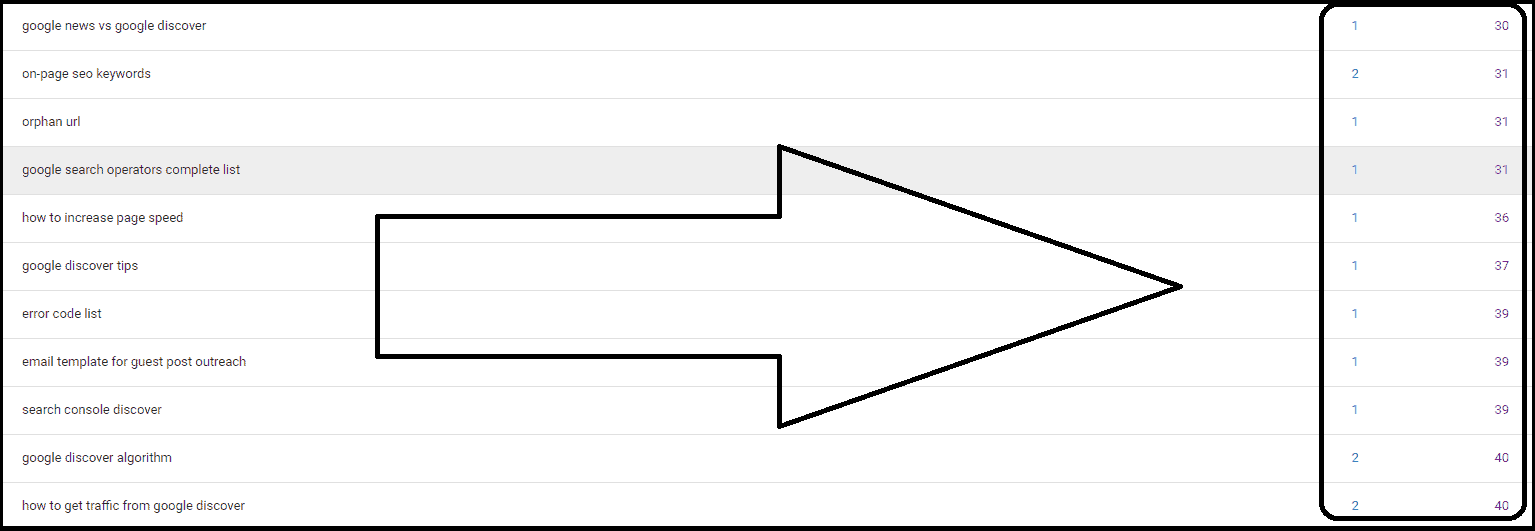
Hi Erik
What a joy to be here again after a bit-long gap!
Nice to read a well-researched content after a long time.
Thanks for sharing more about Keyword Golden Ratio
in fact an in-depth guide on the subject. Thanks, Erik for the pain you have taken to create such an informative post
Keep up the good work
Keep sharing
Best Regards
Philip
Thanks for the fantastic feedback, Phil.
Really appreciate it.
Hi, Erik,
This is a monster of a post.
You’ve shared lots of tips and tactics to get good results from Keyword Golden Ratio. I can’t imagine enough how much effort and research that goes into writing this post.
I will try this and see what the result it gets.
Thanks for sharing.
Hi Shamsudeen,
indeed.
This kind of in-depth post requires a lot of research and work, but I hope it can be really useful to the content creators visiting my site.
Thanks for sharing your positive comment. 🙂
Hi Erik, I really like this one, and I’m glad you let us know that a lot of content creation is needed as well for it. I may try this for my newer blog. Thank you for the great details in this one.
Good to hear this, Lisa.
Let me know how it goes! 😉
Hi Erik.
You might just be the person who gives AllInTitle it’s big break on the road to fame. I don’t think many people know about this search operator.
I wonder if the equation works as well for search phrases with thousands of AllInTitle as for those with just dozens. The reason I wonder is because we don’t really compete with thousands of websites. The only ones that we really compete with are the ones at the top of the rankings. Whether there are 10 below us or 10,000 probably doesn’t matter.
Hey David.
If you try a few searches, you will see that the Allintitle operator gives inconsistent results, and often different ones. So yeah, this search operator has probably been deprecated (but not officially, yet).
And you’re right. In the end, only the top positions on the first page of SERPs produce organic traffic.
Thanks for stopping by and sharing your thoughts!
Nice article Erik. You nailed it very well.
The way you explained the KGR with pictures is at next level.
Thank you for bringing this post. Keep share such value here.
Thanks for your feedback, Venkat.
I’m glad you enjoyed this KGR guide.
I add so many screenshots on purpose, to help out with the explanation.
Happy to hear it works! 🙂
I have known about this method for a while now, but this article helped to fill in some gaps that I didn’t learn when I originally found out about it.
Thanks for this great resource. I have bookmarked it and will be back for more.
That’s great, Barrie.
Thanks for the good feedback.
How about the word count on articles/posts that are created based on KGR? Many of the long tail keywords and KGR subjects are quite specific, and it’s hard to create content that is above 700-800 words for the subject unless you want to fill the content with information that is a bit far off the main subject.
Just focus on satisfying search intent, without worrying about the word count of the page, Yasser.
Thanks for the quick reply! Have a great Friday.